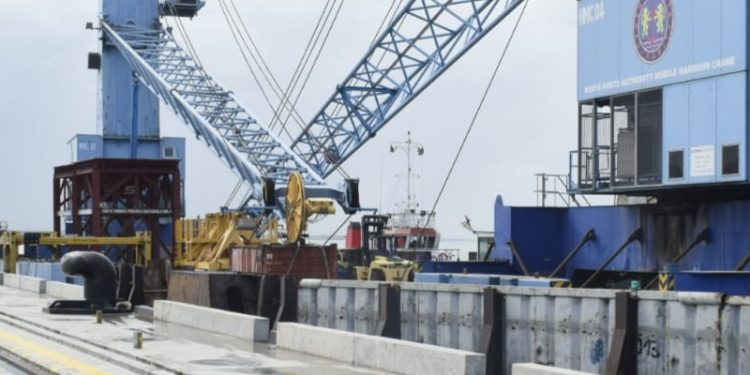Lamu port will play a critical role in complementing Mombasa port whose expansion is stretching towards the limit. The facility, which now has 19 berths, can only be developed to Berth 29, according to John Mwangemi.
There is a market of over 385 million people in the Eastern Africa and the unexploited economic opportunities in these countries. Any demand for port facilities beyond berth 29 would need to be accommodated elsewhere, Mwangemi said.
The forecasted demand of the port facilities, the new commercial port in Lamu and the development of a new transport corridor to serve the Ethiopia and South Sudan markets made Kenya Ports Authority (KPA) to develop a new Master Plan covering 2018-2047- which in Lamu as an important component.
This, coupled with the new move to enhance the development of the Blue Economy for sustainable development and poverty eradication, also contributed to the development of the Port Master Plan, according to KPA.
Other major changes coming into play, which would otherwise impact the Global Maritime Industry and the local Maritime Transport sector, were also among the factors that created the need for the development of the new master plan.
Globally, the ships are growing bigger as ship owners want to leverage on more profits by carrying more cargo running fewer ships, while shippers want to get lower freight costs through economies of scale. The biggest ships in the market, such as Maersk Emma, MSC Oscar and others, are now almost 20,000 Twenty Foot Equivalent Units (TEUs) capacity. Ports thus face the challenge of providing space to accommodate these monstrous ships.
There is cutthroat competition among ports, each wanting to be a Hub Port, putting enormous investments in the ports.
The Mombasa port is among facilities in Africa that are almost full, a situation likely to lead to congestion and a need for expansion, a continental report showed last year.
‘The Africa’s Port: Fast-tracking Transformation’ report lists Mombasa alongside Lagos (Nigeria), Dar es Salaam (Tanzania) and Cape Town (South Africa), as among facilities with infrastructure deficits in the short-term.
“Existing port infrastructure is often inadequate to meet demand. As a result, several major ports, including Lagos, Mombasa, Dar es Salaam and Cape Town, are on the verge of reaching their capacity limit, which can lead to costly congestion issues,” the report states.
“Without investment and considering growth in demand, the situation risks worsening.”
The report was put together by Africa CEO Forum and Okan — a strategy consulting and financial advisory firm.
The Port of Mombasa comprises Kilindini harbour, Port Reitz, the Old Port, Port Tudor and the whole of the tidal waters encircling Mombasa Island. The port has a capacity of 2.65 million twenty-foot equivalent units.
Kenya is ranked highly among Africa’s top 20 ports in cargo handling and container dwell-time.
The annual report puts Kenya in fifth position among ports which handled most cargoes in the continent in recent time. The Mombasa port had an average annual throughput of 1.3 million TEUs, a measure of volume in units of twenty-foot-long containers.
Egypt tops with its Alexandria and Port Said facilities with an average capacity of 6.2 million TEUs, followed by South Africa (Durban) with 4.9 million TEUs, then Morocco with its Tanger Med port (4.8 million TEUs).
Algeria, which has about 15 ports with six major ones, comes fourth with an annual handing capacity of 4.8 million TEUs.
In cargo dwell-time, Mombasa is the second-best performing in Africa, with five days after Durban, which has an average of four days.
The Africa CEO Forum has urged governments to invest wisely and avoid notorious ‘white elephants’.





